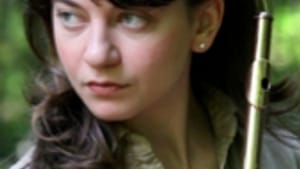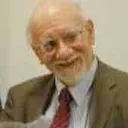Stay in the Loop
BSR publishes on a weekly schedule, with an email newsletter every Wednesday and Thursday morning. There’s no paywall, and subscribing is always free.
The tango and young musicians

You read it here first:
The tango is the next big youth thing
TOM PURDOM
I have a hot tip for pundits who like to pontificate about the state of American youth: Young musicians are developing an affinity for the tango.
I only have two examples so far, but in the world of trend-spotting journalism, that’s good enough. If a graph has two points on it, after all, you can connect them with a straight line that points in a definite direction.
Example No. 1 is the tango for flute and guitar that Mimi Stillman played with Allen Krantz at the latest Dolce Suono chamber concert. I’ve heard Krantz play tangos with a number of partners over the years, but this one lifted my understanding of the form to a whole new level.
If it’s possible to dance with a flute, Stillman was dancing with her instrument. Not by moving around— she kept that to the irrepressible minimum— but by the things she did with the arc and flow of the melody line. Stillman had obviously absorbed the spirit of the tango and translated the movements of the dance into the subtleties of color and dynamics she added to the invisible line she described with her flute.
Who needs Valentino or Astaire?
When I spoke to Krantz at the reception after the concert, he said that his partner had really gotten into the tango. Stillman herself said that she moved around and danced to the music when she rehearsed. She had kept that impulse under control on stage and transmitted just enough body language to add a visual element to the performance. Believe me, you don’t need Rudolf Valentino or Fred Astaire when somebody plays the way she was playing.
I encountered the second example just four days later, at the Astral concert that showcased another formidable wind player, clarinetist Jose Franch-Ballester. The tango on this program was a longer, three movement piece for a larger ensemble— clarinet, violin, cello and piano. All the musicians, including Franch-Ballester, were currently participating in Astral’s program for selected young artists, and all turned in the same kind of riveting performance Mimi Stillman had.
Up from the working-class bars
The tango began its life in the working-class bars of Buenos Aires and Uruguay, acquired a ballroom gloss in the 1930s and ’40s, and continued to evolve in the decades that followed. The Astral Artists performed in the Trinity Center for Urban Life, which doubles as an Episcopal church, but they transformed the atmosphere into an idealized version of the sexy milieus that have shaped the tango.
I wasn’t the only person who felt that way, either. You could see the response in the audience and you could hear it in the applause.
Both tangos were composed by the Argentine composer Astor Piazzolla (1921-1992). As Allen Krantz sometimes mentions at concerts, Piazzolla belonged to the legion of composers who journeyed to Paris to study with the legendary teacher Nadia Boulanger. Boulanger told him to go back to Argentina and write tangos and he took her advice. Piazzolla created a library of tangos that spans all the moods the dance has acquired in its travels.
The mating dances of animals and birds
So what is the spirit of the tango? What does this development tell us about the state of our youth, the future of our culture, and other matters we Americans love to agonize over?
All the classic dances are stylized courting rituals. As any biologist will tell you, many animals and birds woo their mates by dancing. It’s one of the techniques males use to demonstrate their genetic fitness. It’s more fun than fighting and healthier, too.
When Karl Middleman’s Classical Symphony devoted a concert to the minuet many years ago, with historical dancers costumed in colorful 18th-Century outfits, the dancers even looked like brightly plumaged birds.
When serial adultery was a major pastime
The minuet combines sexual display with a communal setting and a ceremonial swapping of partners. It reflects the mating customs of a highly structured society in which serial adultery was a major pastime of the aristocracy. Its successor, the waltz, added the trappings of romance and the titillation of public embraces.
The tango combines sex with grace, like the waltz, but it’s more overtly erotic and embraces a wider emotional range. The tango can encompass the darkly romantic cello melodies in the second movement of the quartet I heard at the Astral concert and the raucousness and wild clarinet flights that ran through its finale.
Someone once said that the waltz expresses the idea that life is, with reservations, worth celebrating. The tango springs from the feeling that the sexual attraction of two conscious, intelligent creatures is a complex, endlessly fascinating marvel.
Is this a significant development? Does it tell us something about the attitudes blossoming among the youth of our great nation?
I’m inclined to think it could. After all, we live in a time when people are becoming more open about their sexual feelings, and the relationship between the sexes is becoming steadily more complicated as women assume wider roles. Who would understand that better than young artists who live with all the challenges these developments impose on the first stage of adulthood?
It’s possible, of course, that I am projecting my personal preoccupations onto some hard-working musicians who were merely trying to get the damned notes right. But if a frenzy of tangoism sweeps through our society— remember, you read about it first in the Broad Street Review.
The tango is the next big youth thing
TOM PURDOM
I have a hot tip for pundits who like to pontificate about the state of American youth: Young musicians are developing an affinity for the tango.
I only have two examples so far, but in the world of trend-spotting journalism, that’s good enough. If a graph has two points on it, after all, you can connect them with a straight line that points in a definite direction.
Example No. 1 is the tango for flute and guitar that Mimi Stillman played with Allen Krantz at the latest Dolce Suono chamber concert. I’ve heard Krantz play tangos with a number of partners over the years, but this one lifted my understanding of the form to a whole new level.
If it’s possible to dance with a flute, Stillman was dancing with her instrument. Not by moving around— she kept that to the irrepressible minimum— but by the things she did with the arc and flow of the melody line. Stillman had obviously absorbed the spirit of the tango and translated the movements of the dance into the subtleties of color and dynamics she added to the invisible line she described with her flute.
Who needs Valentino or Astaire?
When I spoke to Krantz at the reception after the concert, he said that his partner had really gotten into the tango. Stillman herself said that she moved around and danced to the music when she rehearsed. She had kept that impulse under control on stage and transmitted just enough body language to add a visual element to the performance. Believe me, you don’t need Rudolf Valentino or Fred Astaire when somebody plays the way she was playing.
I encountered the second example just four days later, at the Astral concert that showcased another formidable wind player, clarinetist Jose Franch-Ballester. The tango on this program was a longer, three movement piece for a larger ensemble— clarinet, violin, cello and piano. All the musicians, including Franch-Ballester, were currently participating in Astral’s program for selected young artists, and all turned in the same kind of riveting performance Mimi Stillman had.
Up from the working-class bars
The tango began its life in the working-class bars of Buenos Aires and Uruguay, acquired a ballroom gloss in the 1930s and ’40s, and continued to evolve in the decades that followed. The Astral Artists performed in the Trinity Center for Urban Life, which doubles as an Episcopal church, but they transformed the atmosphere into an idealized version of the sexy milieus that have shaped the tango.
I wasn’t the only person who felt that way, either. You could see the response in the audience and you could hear it in the applause.
Both tangos were composed by the Argentine composer Astor Piazzolla (1921-1992). As Allen Krantz sometimes mentions at concerts, Piazzolla belonged to the legion of composers who journeyed to Paris to study with the legendary teacher Nadia Boulanger. Boulanger told him to go back to Argentina and write tangos and he took her advice. Piazzolla created a library of tangos that spans all the moods the dance has acquired in its travels.
The mating dances of animals and birds
So what is the spirit of the tango? What does this development tell us about the state of our youth, the future of our culture, and other matters we Americans love to agonize over?
All the classic dances are stylized courting rituals. As any biologist will tell you, many animals and birds woo their mates by dancing. It’s one of the techniques males use to demonstrate their genetic fitness. It’s more fun than fighting and healthier, too.
When Karl Middleman’s Classical Symphony devoted a concert to the minuet many years ago, with historical dancers costumed in colorful 18th-Century outfits, the dancers even looked like brightly plumaged birds.
When serial adultery was a major pastime
The minuet combines sexual display with a communal setting and a ceremonial swapping of partners. It reflects the mating customs of a highly structured society in which serial adultery was a major pastime of the aristocracy. Its successor, the waltz, added the trappings of romance and the titillation of public embraces.
The tango combines sex with grace, like the waltz, but it’s more overtly erotic and embraces a wider emotional range. The tango can encompass the darkly romantic cello melodies in the second movement of the quartet I heard at the Astral concert and the raucousness and wild clarinet flights that ran through its finale.
Someone once said that the waltz expresses the idea that life is, with reservations, worth celebrating. The tango springs from the feeling that the sexual attraction of two conscious, intelligent creatures is a complex, endlessly fascinating marvel.
Is this a significant development? Does it tell us something about the attitudes blossoming among the youth of our great nation?
I’m inclined to think it could. After all, we live in a time when people are becoming more open about their sexual feelings, and the relationship between the sexes is becoming steadily more complicated as women assume wider roles. Who would understand that better than young artists who live with all the challenges these developments impose on the first stage of adulthood?
It’s possible, of course, that I am projecting my personal preoccupations onto some hard-working musicians who were merely trying to get the damned notes right. But if a frenzy of tangoism sweeps through our society— remember, you read about it first in the Broad Street Review.
Sign up for our newsletter
All of the week's new articles, all in one place. Sign up for the free weekly BSR newsletters, and don't miss a conversation.

 Tom Purdom
Tom Purdom